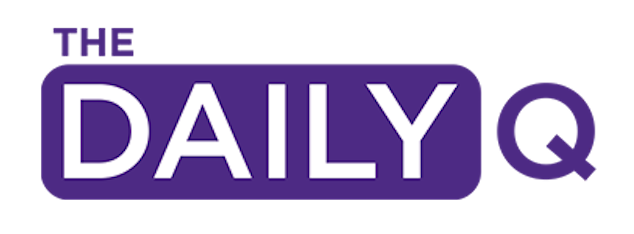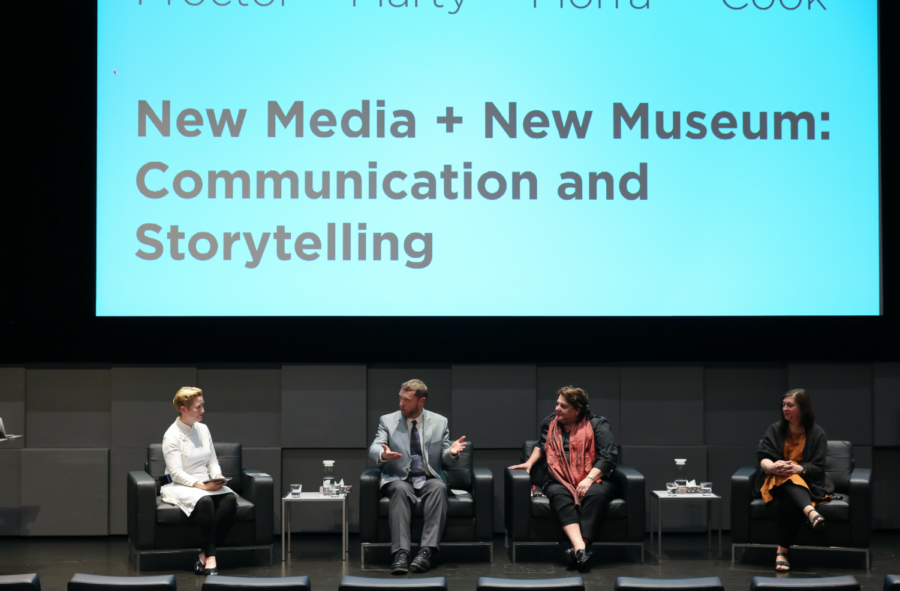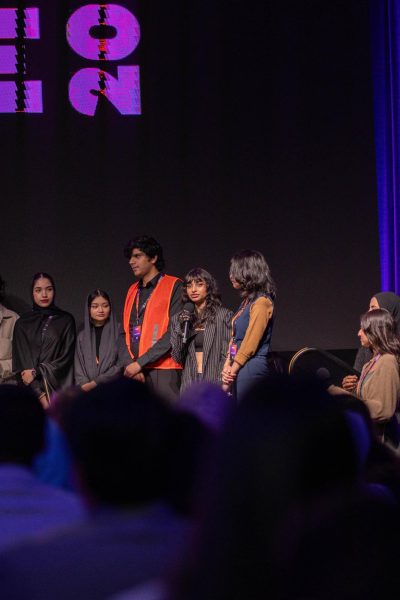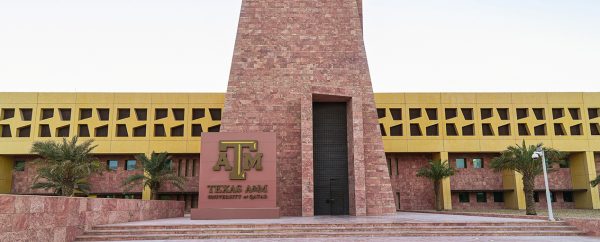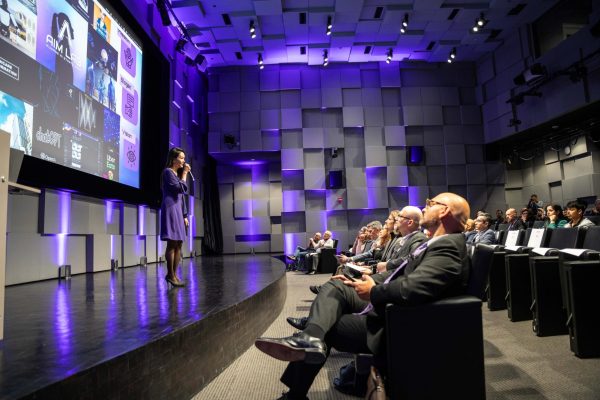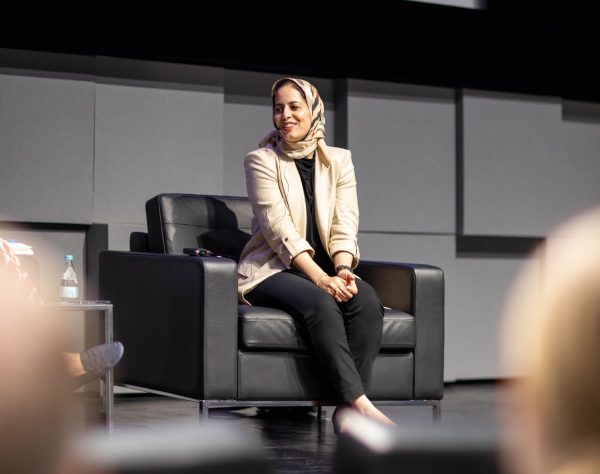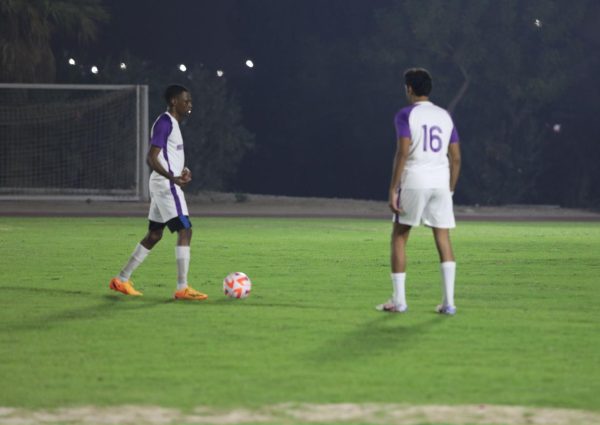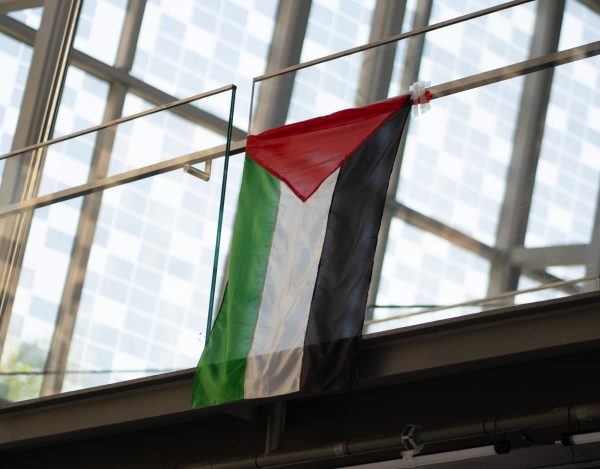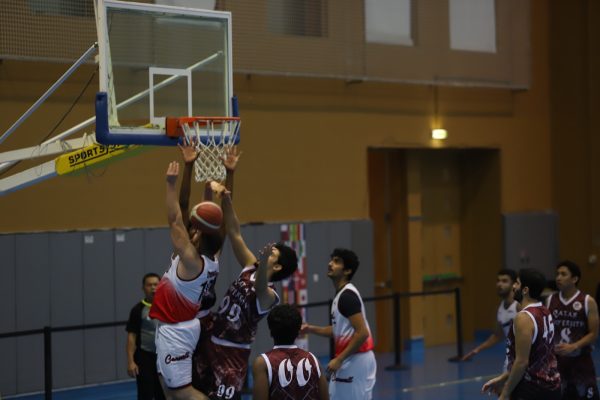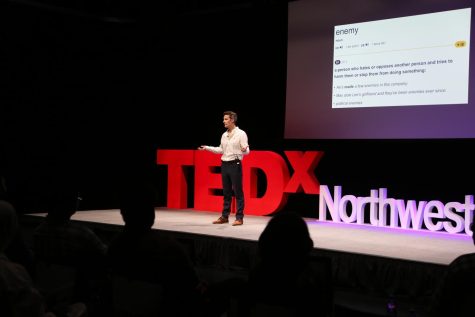Media Majlis Launches First Public Program
Nancy Proctor, Paul Marty, Anne Morra and Sarah Cook at the Media Majlis’ first public program held at Northwestern University in Qatar. Photo provided by Pamela Erskine-Loftus.
The Media Majlis held its first public program at Northwestern University in Qatar on March 12.
Under the program, “New Media + New Museum: Communication and Storytelling,” developed in collaboration with University College London Qatar, a number of speakers from around the world discussed the increasing use of new media and technology in museums.
The future of digital culture for museums depends on building a shared community where all visitors feel they are a part of the museum, said event panelist Paul Marty, professor and associate dean for innovation at the College of Communication and Information at Florida State University. The panel also included Anne Morra, associate curator in the department of film at the Museum of Modern Art in New York, and Sarah Cook, a curator, writer and researcher based in Scotland. This discussion was moderated by Nancy Proctor, director of the Peale Center for Baltimore History and Architecture, and live streamed to an audience in London at UCL.
While sharing the history of film in museums, Morra explained how technology has transformed the way of storytelling in museums around the world, including at MoMA. According to Morra, MoMA has shifted from being a radical new museum in 1935 to a radical museum in today’s world that will be reopening this fall after the integration of film and media into all of its gallery, marking an important transition in the way it shares stories with its audiences.
“This is going to be the first time that our audience members will walk in and will see moving images and hear sound,” she said.
Cook agreed with Morra regarding the use of technology in storytelling at museums. “Digital technology has transformed the museum in a way that it has transformed any other industry concerned with sharing information,” she said.
According to the panelists, museums around the world are now using massive data sharing projects, such as Europeana, to share records for thousands of objects. Some museums, such as the Metropolitan Museum of Art in New York, are also making extensive use of virtual reality to offer online tours under Google’s Art and Culture project. Interactive screens and extensive use of sound are other experiences being integrated into the museums.
According to Marty, audiences are not passive consumers of a museum’s resources. The purpose of innovative technologies integrated into the museum experience is to help people see that the museum, its collection, and its information resources belong to everyone. In this way, museums can be seen as inclusive spaces that provide equal access through helping bridge the gap between individuals who feel they belong in a museum space and individuals who feel otherwise.
“If we can’t help people see themselves in museums, if we can’t help people use new media to tell their own stories, all of what we are doing is for nothing,” he said.
By shedding light on the transformative role played by technology in shaping ways through which museums interact with their audiences, the panel discussion raised some important questions. The audiences in Qatar and London actively engaged with the panelists and voiced their diverse queries. In response to a question regardingincorporation of digital elements that might compromise the integrity of the museum experience, Cook said that museums are memory institutions and repositories for our shared cultural heritage.
“It is a dereliction of duty on a museum if it does not seek to capture our mediated experience of the world. If we are all living with digital technology in our pocket, there’s no reason why it’s not to be in a museum,” she stated.
The Media Majlis is a museum dedicated to exploring journalism, communication and media. Inspired by former first lady Sheikha Moza bint Nasser, chairperson of the Qatar Foundation, it is the first media museum in the Arab world. Through exhibitions, publications, events and online resources, the Media Majlis offers its visitors opportunities to engage in a conversation on the various themes of its subject matter.
“We see all these components [exhibitions, publications, events and online resources] as pieces to a jigsaw puzzle. They all complement each other and all look at things in a different way,” saidPamela Erskine-Loftus, director of the Media Majlis.
According to Erskine-Loftus,there are few museums in the world that tackle the subject of media, communication and journalism. If they do, they tend to be object based rather than on the content of the aforementioned subjects. “We are unique because we use the technology to look up the social, political, and cultural aspects of these subjects,” she said.
The Media Majlis, which, according to Erskine-Loftus, is set to open its doors officially within the next few weeks, will employ innovative technology as an important tool for storytelling as well.

